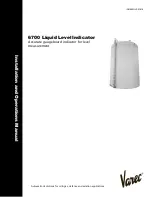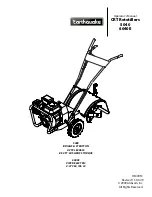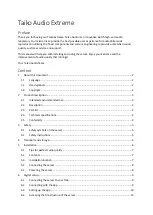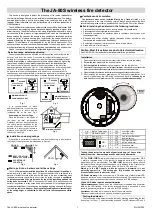
GB - NOTICE: Read and fully understand these instructions before using this equipment.
A.
DESCRIPTION
Safety harness is a body holding device which is a component of personal protective
equipment described in EN 363 standard intended to protect the user against falls from a
height. The harness is approved for a user, including tools and equipment, with a weight of
up to 140 kg. Maximum rated load 140 kg for EN361 full body harness is permited only
when energy absorbing elelent compatible with 140 kg maximum rated load is used.
Energy absorbing element must be tested according to Rfu 11.062 or revelant EN
standard.
The harness is certified and complying with the standard:
!
EN 361:2002 as a full body harness intended to be used in fall arrest systems.
!
EN 358
:2018
as a
work positioning belt to be used with work positioning equipment;
!
EN 813:2008 as a sit harness for
support
ing
a person in a sitting position with a
physical support to the lower back of the user during work at height in suspension.
!
EN 1497:2007 as a rescue harness for
support
ing
the full body of the user in right
position during rescue operation. Intended to be used during normal working
activities.
Basic materials:
-
webbings - polyester
-
adjustment buckles: steel / aluminium
-
connecting buckles: steel
-
attachment D-rings: aluminium
B.
NOMENCLATURE
1.
Shoulder strap.
2.
Leg strap.
3.
Leg strap connecting/adjustment buckle.
4.
Chest strap.
5.
Chest strap connecting/adjustment buckle.
6.
Identity label.
7.
Fall arrest (A) back attachment D-ring EN361.
8.
Fall arrest (A) front attachment
D-ring
EN 361.
9.
Shoulder strap adjustment buckle.
10. Fall arrest (A)
connector
EN361.
1
1
. Lateral belt work positioning D-rings EN 358.
1
2
. Work positioning belt waist strap.
1
3
. Work positioning belt adjustment buckle.
1
4
. Belt pad.
1
5
. Front
waist sit harness D-ring EN 813.
1
6
.
Shoulder strap connector.
1
7
. Back waist work positioning/restraint D-ring EN358.
1
8
. Shoulder strap rescue harness D-rings EN1497.
19
. Dorsal strap adjustment buckle.
2
0
. Rear leg straps adjustment buckle.
2
1
. Tool loops – to be used with hand tools of max. weight 2 kg.
C.
SIZES
The harness is manufactured in four sizes:
- small: S
- universal: M-XL
- extra-large: XXL
- extra, extra-large: XXXL
D.
DONNING THE HARNESS:
D
.1
Hold the harness by dorsal D-ring. Shake the harness to allow all straps to fall in
place.
D
.2
Unbuckle the front shoulder strap connector. Step into the leg loops putting one leg
through each leg loop.
D
.3
Pull the harness up.
D
.4
Tighten the waist belt strap. The strap should fit tight around the waist.
D
.5
Take the shoulder straps from the back and slide your head through it, taking care
not to twist the straps.
D
.6
Connect shoulder loop to the connector located on the waist strap behind the chest
D-ring.
D
.7
Adjust the shoulder straps so the harness fits the body, not too tight.
D
.8
Adjust the leg straps. The straps should fit the legs.
-
rescue D-rings: steel
D
.9
Adjust the height of the leg straps by the rear adjustment straps.
D
.10 Back attachment D-ring must be positioned between shoulder blades.
D
.11 Front attachment D-ring or attachment linked loops must be centred on lower chest.
Front sit harness D-ring must be centred on the waist.
E.
CONNECTING THE BUCKLES
F.
ADJUSTING THE STRAPS
F.1 Tightening
F.2 Loosening
G
.
MEANING OF THE MARKING
a)
Model symbol;
b)
Device type;
c)
Reference number;
d)
Harness size;
e)
Month and year of manufacture;
f)
Serial number of the harness;
g)
number/year of European standards;
h
)
CE mark and number of the notified body controlling manufacturing of the equipment;
i
)
Caution: read and understand the instruction manual before use;
j)
Maximum rated load - 140 kg;
k
)
Waist belt size in cm;
l)
Identification of the harness manufacturer or distributor.
H. ATTACHING THE HARNESS
H
.
1 ATTACHING FALL ARRESTS SYSTEMS – EN361
Fall arrest system can be attached only to the fall arrest attachment point of full body
harness EN 361 marked with capital letter A:
- directly to the back D-ring (H.1.1)
- to the front attachment D-ring placed on the chest strap (H.1.2).
- to the front strap connector (P-70 and P-70C) - H.1.3. The c
onnector has to work on
major axis with gate closed and locked.
It’s forbidden to use connecting loops of the
harness as the attachment point - H.1.4.
H.2.
CONNECTING WORK POSITIONING SYSTEMS – EN358
Work positioning or restraint system should be attached to the work positioning belt EN
358 D-rings
or to the frontal waist sit harness EN813 D-ring
. Work positioning lanyard can
be connected to to a structure by encircling it (H.2.1) or directly to an anchor
point (H.2.2).Work positioning system must be connected to a structure or an anchor point
that is positioned at waist level or above.
Work positioning lanyard must be kept taut
during use.
It is strictly forbidden to use the work positioning belt EN358 D-rings or loops
for fall arrest puroposes. The belt shouldn’t be used if
there is a foreseeable risk of the
user becoming suspended or being exposed to unintended tension by the waist belt.
When using a work positioning system, the user normally relies on the equipment for
support, therefore it is essential to consider the need of using a back-up, e.g. a fall arrest
system.
H.3
CONNECTING ROPE ACCESS SYSTEMS TO SIT HARNESS – EN813
Rope access system can be attached to the frontal waist D-ring
of the sit harness EN813.
The anchor point of the rope access system must be located above the user.
Before use
the sit harness the first time the user should carry out a suspension test in a safe place to
ensure that the sit harness is the correct size, has sufficient adjustment and is of an
acceptable comfort level for the intended use.
It is strictly forbidden to use the
sit
harness
EN813 D-ring
for
fall arrest
purpose.
H
.
4
CONNECTING RESCUE SYSTEMS – EN1497
Double r
escue harness loops
or D-rings
placed on the shoulder straps can be used linked
together only for rescue purposes
(H.4.1)
. Don't use the single loop to link with 1
connector or lanyard, because the risk is to strangle
(H.4.2)
.
I.
PERIODIC INSPECTIONS
Safety harness must be inspected at least once every 12 months from the date of first
use. Periodic inspections must only be carried out by a competent person who has the
knowledge and training required for personal protective equipment periodic inspections.
Depending upon the type and environment of work, inspections may be needed to be
carried out more frequently than once every 12 months.
J
.
MAXIMUM LIFESPAN OF THE EQUIPMENT
The maximum lifespan of the harness is 10 years from the date of manufacture.
ATTENTION: The harness maximum lifetime depends on the intensity of usage and the
environment of usage. Using the harness in rough environment, marine environment,
contact with sharp edges, exposure to extreme temperatures or aggressive substances,
etc. can lead to the withdrawal from use even after one use.
K.
WITHDRAWAL FROM USE
The harness must be withdrawn from use immediately and destroyed when it has been
used to arrest a fall or it fails to pass inspection or there are any doubt as to its reliability.
L
.
THE ESSENTIAL PRINCIPLES FOR USERS OF PERSONAL PROTECTIVE
EQUIPMENT AGAINST FALLS FROM A HEIGHT:
!
personal protective equipment shall only be used by a person trained and
competent in its safe use.
!
personal protective equipment must not be used by a person with medical condition
that could affect the safety of the equipment user in normal and emergency use.
!
a rescue plan shall be in place to deal with any emergencies that could arise during
the work.
!
being suspended in PPE (e.g. arresting a fall), beware of suspension trauma
symptoms.
!
to avoid symptoms of suspension trauma, be sure that the proper rescue plan is
ready for use. It is recommended to use foot straps.
!
it is forbidden to make any alterations or additions to the equipment without the
manufacturer's prior written consent.
!
any repair shall only be carried out by equipment manufacturer or his certified
representative.
B
efore use
the rescue
harness for the first time
the user should carry out a suspension test
in a safe place to
ensure that the
rescue
harness is the correct size, has sufficient adjustment and is of an
acceptable comfort level for the intended use
. EN1497 D-rings or loops are for recue
purpose only. It’s not allowed to use rescue harness D-rings or loops for fall arrest
purpose.
Every periodic inspection must be
recorded in the Identity Card of the equipment.
































